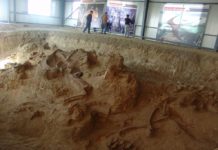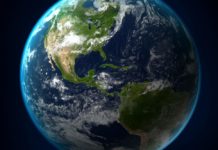Young female scientist hopes to create energy efficient biofuel from bacteria
 Photo: Marianne Haines will convert bacteria into biofuel as part of her PhD study in Calgary. (ABC Central Victoria: Larissa Romensky)
Photo: Marianne Haines will convert bacteria into biofuel as part of her PhD study in Calgary. (ABC Central Victoria: Larissa Romensky)
Environmental microbiologist and science champion Marianne Haines hopes her work converting bacteria into biofuel will lead to more sustainable outcomes, and more women studying science at the postgraduate level.
Growing up in regional Victoria, the former boot camp leader was inspired to make a career change after returning to university.
Now, Ms Haines will research how to generate renewable, carbon-neutral energy from bacteria, fungi and algae when she undertakes her PhD in Canada this year.
“What I’m looking at in the University of Calgary is how we can turn photosynthetic microorganisms, like algae and bacteria, into fuel like methane,” Ms Haines said.
Researchers at the University of Calgary are already turning algae and bacteria into biofuel, but the 24-year-old said her PhD would focus on making the process even more efficient.
“Whenever we’re trying to generate energy, we’re going to try and spend the least amount of energy doing that,” she said.
Ms Haines hopes to take the innovative approach beyond the lab.
“I hope I can make a difference in increasing that efficiency and then being able to scale up that technology into something that we can use industrially and commercially,” she said.
The process of creating methane
 Photo: Bacteria and fungi are grown from soil samples at La Trobe University in Victoria. (Supplied: Gene Drendel)
Photo: Bacteria and fungi are grown from soil samples at La Trobe University in Victoria. (Supplied: Gene Drendel)
At the University of Calgary, researchers used nearby soda lakes as a source of microorganisms.
Using a microbial mat, researchers took the bacteria and algae back to the lab, where they were grown on a surface that resembled a large, vertical green solar panel.
“It’s made out of Perspex, so that sunlight can come in, and you put the microbes down the bottom of this kind of Perspex-esque device and, over time, [the microorganisms] will grow and fill up the whole rectangle,” Ms Haines explained.
After the microorganisms have been harvested from the mat, researchers can then degrade the mass into methane.
Although the end product is a greenhouse gas, Ms Haines said the process was carbon neutral.
“So, we’ve taken carbon dioxide out of the atmosphere, which is a good thing, and then we’ve burnt out methane at the end and released that carbon dioxide back, but at least we have a carbon-neutral way of getting liquid fuel,” she said.
A roundabout way of getting to science
 Photo: Marianne Haines and her twin sister grew up in Nagambie in northern Victoria. (Supplied: Marianne Haines)
Photo: Marianne Haines and her twin sister grew up in Nagambie in northern Victoria. (Supplied: Marianne Haines)
Growing up on her parent’s sheep farm just outside Nagambie in northern Victoria, the La Trobe University Honours graduate was never drawn to science during high school.
“I was interested in sport and fitness and design,” she said.
After a year of studying industrial design at Monash University, Ms Haines put her studies on hold to become a personal trainer, running boot camps and coaching clients.
She later found her niche in science after going back to university and studying a microbiology-related unit within another course.
It was after listening to an “amazing and incredible” lecture from one of her teachers that she decided to take things further.
“I was kind of nudging the students next to me, saying ‘Why aren’t you more excited about this? Do you not fully comprehend what he’s saying?'” Ms Haines said.
The lecture was a game changer for Ms Haines, who then decided to major in microbiology and biochemistry.
Greater access to science technologies in rural areas
 Photo: Environmental biologist Marianne Haines is heading to the University of Calgary to pursue her PhD in renewable energy. (ABC Central Victoria: Larissa Romensky)
Photo: Environmental biologist Marianne Haines is heading to the University of Calgary to pursue her PhD in renewable energy. (ABC Central Victoria: Larissa Romensky)
While there were “really good ratios” of men and women in biological and veterinary sciences at the undergraduate level, the young scientist said there were fewer at the postgraduate level and fewer industry leaders to look up to.
“Thinking back on it, I thought ‘Who are my female role models in science?’, and the fact that I would have to go out and look for them is kind of disheartening,” she said.
Still, Ms Haines said it was a great time to be a young woman pursuing a career in STEM.
“There are great initiatives, there are great scholarships, there are great grants and support networks out there for us,” she said.
“Still, more is good, but I feel encouraged. I feel like there’s support behind me.”
Although access to high-tech laboratories has generally been confined to the cities, Ms Haines said greater access to new science technologies was needed in rural areas to encourage practical, hands-on experience.
“It would be great to move the higher types of science and laboratories into rural locations. Accessibility at the moment I don’t think is great,” she said.
After not being a fan of science at school, Ms Haines wants to see science education improved for younger people, so the next generation can be taught about science the same way her generation was taught about the importance of sustainability.
“I think the next success could be science, so an early education beyond bicarb soda and vinegar in a papier mache volcano,” she said.
“We need to go beyond that and teach more about those career pathways and hopefully develop that passion.”
 Photo: Marianne Haines will convert bacteria into biofuel as part of her PhD study in Calgary. (ABC Central Victoria: Larissa Romensky)
Photo: Marianne Haines will convert bacteria into biofuel as part of her PhD study in Calgary. (ABC Central Victoria: Larissa Romensky)  Photo: Bacteria and fungi are grown from soil samples at La Trobe University in Victoria. (Supplied: Gene Drendel)
Photo: Bacteria and fungi are grown from soil samples at La Trobe University in Victoria. (Supplied: Gene Drendel)  Photo: Marianne Haines and her twin sister grew up in Nagambie in northern Victoria. (Supplied: Marianne Haines)
Photo: Marianne Haines and her twin sister grew up in Nagambie in northern Victoria. (Supplied: Marianne Haines)  Photo: Environmental biologist Marianne Haines is heading to the University of Calgary to pursue her PhD in renewable energy. (ABC Central Victoria: Larissa Romensky)
Photo: Environmental biologist Marianne Haines is heading to the University of Calgary to pursue her PhD in renewable energy. (ABC Central Victoria: Larissa Romensky) 









